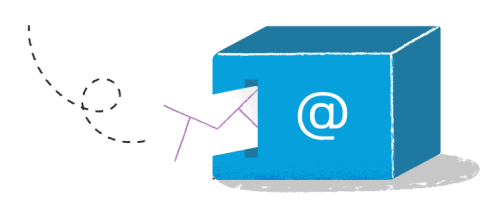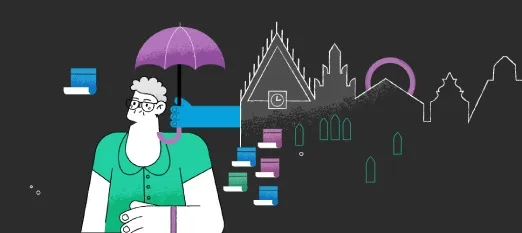
Design Thinking for the public good. Municipality of Wrocław and Nokia case study
Inside this article:
Design Thinking as an innovation trigger to kickstart an IT project in the public domain
Design Thinking is here now, but what is it and is it any different, than what was done before? Is it relevant to the public sector? Well, it’s not like previous public sector thinkers had never thought of end-users or their endeavors’ efficiency. They most certainly did, but they thought of it secondarily. The first motive was to ensure that the government’s needs were met. Only sometimes there was room to make a service more convenient. That’s what got us (and still gets us, in some parts) with having to fill out forms in triplicate and re-copying the same information repeatedly.
Design Thinking inverts the old process. It starts with the customer and challenges the provider to twist itself into whatever-it-takes to make the experience compelling, efficient, and, yes, pleasing. The innovative businesses are pushing forward the thinking of employees and encouraging them to learn this new way of thinking that goes beyond data and spreadsheets. The approach blends empathy (understanding end-users better), ideation (learning to meet the needs of customers better), and, not least, strategizing to find a competitive edge that will lead to profits in delivering on those needs.
When implemented well, a design thinking approach improves decision making, which contributes to a more comprehensive problem definition, reduced risk of the project, and more legitimized and effective decisions. It sounds like an excellent process for the public sector and government institutions, but how does it work in reality?
Being citizen-centered and able to co-design
It is essential to look at ideas for software in a broader context. Whether it is a comprehensive platform, mobile application, or even a simple website, it is always a part of a bigger service and a longer customer journey. Whether the focus of service design is a customer-facing app, a B2B service, or a public sector offering, the core idea of the process stays the same. The service design process is an iterative development process. Different stages the organization will gather information about customers, ideate, make scenarios, test possible prototypes or A and B versions. What service design process is definitely not, is that an organization (government institutions) decides on behalf of the customers (citizens), knows what customers need, and then spends countless resources into making a finished product/service, which they launch into the market with high hopes. The point of the service design process is to learn by doing and testing. This preserves resources simultaneously, and the organization gains more information about the customer’s thoughts.
Being citizen-centered is especially essential when it comes to public services. Problems addressed by public sector organizations are generally complicated and wicked to a greater extent than those in private organizations. Design thinking puts a more significant emphasis on understanding any issue from the perspective of the people involved, and its focus on both iterating and co-designing, allows the innovation conversation to evolve with its stakeholders.
Challenge - opening up the bureaucracy to co-creation
Linking the public sector with private companies is always a challenge. The main issues we faced were linked to the previous practices the public-owned companies applied to the development of new services and their internal structure, power, and responsibility distribution. First, employees had difficulty taking the point of view of the end-users as the perspective from which to analyze their current services, how they are delivered, and the current challenges they are facing. They manifested resistance and difficulties in dealing with the idea of user experiences and its design quite often relying only on the point of view of the organization. Another problem that seemed to prevent the introduction of design thinking as an internal competence of the institution was linked to the employees’ difficulties in overcoming internal resistance and barriers due to the current organizational structure based on silos that do not allow work in projects and in a multidisciplinary way. Our experience in cooperating with public companies suggests that service design often introduces new design processes that conflict with the previous ones, producing resistance to change at different organizational levels. Design thinking works on people’s tacit and explicit knowledge basis, challenging it as obsolete, and asking for an in-depth restructuring. Knowledge restructuring is a long-term process that has to be managed by slowly sedimenting new practices in the most favorable internal environment the organization holds and to start from there a process of learning by doing.
As the public sector has increasingly driven a deliberate strategy of outsourcing services implementation and delivery to intermediaries, the employees have difficulty reconnecting their organization with real service delivery. This phenomenon is taking away public sector organizations from its users. It produces a de facto separation between the moment of ideation and that of implementation that can primarily affect the diffusion of design culture in public organizations. The current procurement calls exist primarily to deliver outcomes (predetermined by a higher public institution) by a different system of actors that often has not been represented in the process of design and that often implement services based on the tender that asks for the best prices leaving them without a full understanding of what is required for an outcome.
Upon an invitation from Nokia, nexocode took part in a comprehensive IT project of Wrocław Smart City as a Platform. Wrocław SCaaP is a massive cooperation initiative between the City of Wrocław Municipality, different public organizations and departments, and Nokia as the technical leader working on in sync to provide better, digitized services for Wrocław citizens. You can read more about the SCaaP project in this whitepaper or take a quick break to watch this introduction video. Wroclaw wants to strengthen public services and increase its overall attractiveness to businesses, visitors, and residents via the smart city platform and dedicated solutions. From such a big project, a narrower case of public caregiving services for older adults and those with mobility impairments was selected, and for these particular applications, nexocode was invited to lead the design efforts.
Problem Framing Workshops
Nokia Garage, the innovation space focused on bridging the gap between large organizations and small businesses or individuals, set the stage for the Problem Framing workshops facilitated by nexocode experts.
We knew the challenge area the city wanted to address. We even knew the problem the town wanted to solve. But was it the right one? Was it appropriately defined and in understanding between different orgs? Looking at the first project briefs, we suggested taking a step back and opening it up by thinking about the problem and the project from different angles. The project setup process informed by design is more likely to be successful if strategic designers and DT facilitators are brought in at the earliest stages of decision-making when abstract and theoretical delineation meets with conceptualization geared towards more concrete outcome demands. Framing the problem from the start is the principal condition for the effective unfolding of the phases of defining processes, software development, adoption, and implementation of a whole service path. As designers, we act as stewards for enhanced interactions across administrative compartments and on the complex interface between the public sector institutions, private companies, and the citizens. That is why with Nokia’s Garage help, we organized the first workshop session to give the project the kickstart it deserves.
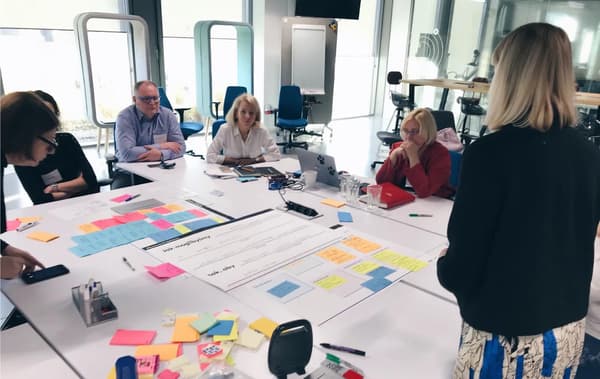
The most important task of organizing the workshop and gathering all the key stakeholders in the same room at the same hour fell onto Nokia’s people. They did a great job not only by managing to successfully invite key employees from various organizations and municipality chapters but also by lending us the creative workshop space of Nokia Garage. The agenda and the workshop facilitation was a task taken over by nexocode experts.
Conducting a work session to understand insights and problem environments is crucial to make a proper project kickstart. Problem Framing is a Design Thinking method used to understand, scope, and prioritize complex business problems. No matter what service, software or strategy you plan on building, or what your outcomes are, it helps make better decisions, faster. We decided to conduct the Problem Framing workshops seeing in first project briefs that the problem wasn’t clearly defined, and the challenges were too broad to be worth the investment. We noticed that defining the scope of a project poorly or skipping the success criteria all together leads the product team towards making the wrong decisions, solve a problem not worth solving, and ultimately drives poor results.
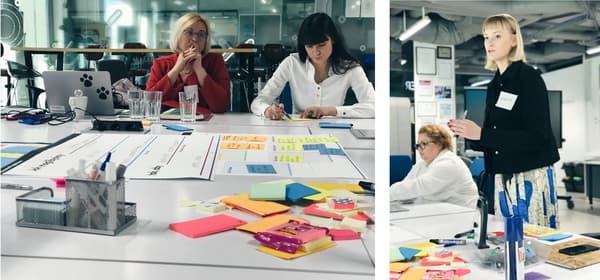
What exercises did we have on the agenda to fall in love with the problem (and not the solutions some participants already had in mind)?
1. Problem Definition
Defining a problem is a very deceptive task – what seems to be the problem at first is often merely a symptom of a deeper problem. The Problem Definition template asks workshop participants to open a problem both up by presenting it in a way that can be examined from several angles and down by defining the broader context and associated issues involved. This is particularly effective when trying to focus a team of people on the critical problems at hand. The prepared template introduces a set of key criteria by which an issue can be articulated and assessed, making the activity highly efficient and to be used with limited workshop timing.
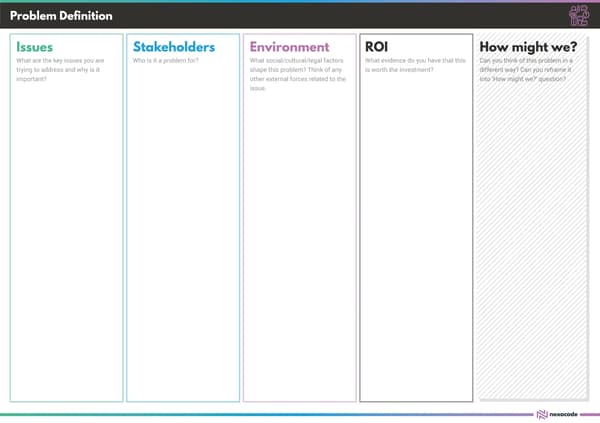
2. Causes Diagram
The Causes Diagram helps to think of a problem thoroughly and provides a structured way to analyze it. It pushed the workshop team to deconstruct all possible causes for the problem rather than the obvious ones. It also helps to differentiate causes from effects or symptoms, giving a better idea of the solutions needed to solve a problem permanently. It helps to build a shared understanding of what it is the team should focus on.
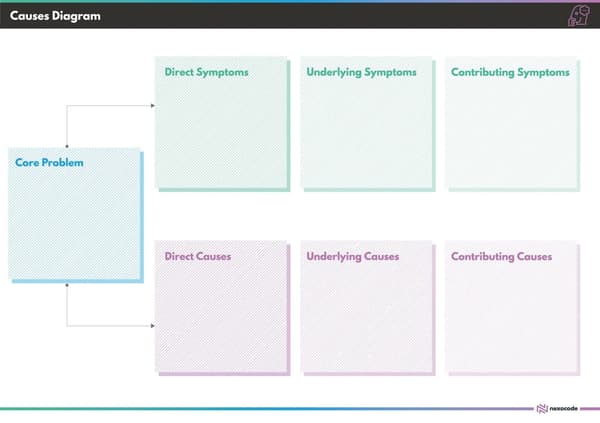
3. Plan Change
Plan Change exercise helps to define whether the team’s work contributes towards achieving the impact they envision and if there is another way that needs to be considered. This method not only helps to clearly articulate and connect the work to the bigger goal, but it also allows the team to spot potential risks in the plan by sharing the underlying assumptions in each step. With the help of this template workshops, facilitators can also help align team members to the larger end goal and help them understand their crucial role in achieving it.
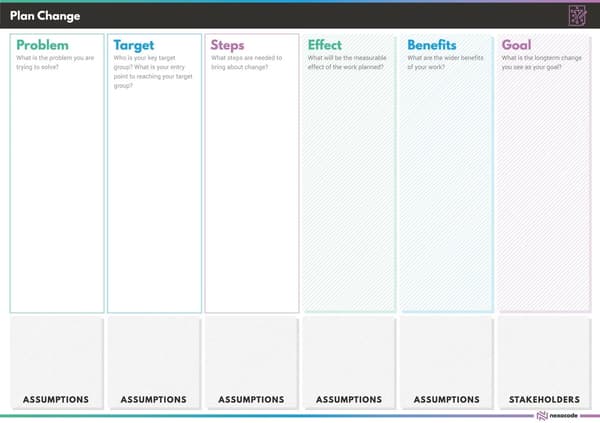
4. Design Challenge Statement
The definition stage of the Design Thinking process ensures everybody on the team fully understands the design project’s goal. It helps articulate the design problem and provides a clear-cut objective to work towards. A meaningful, actionable design challenge statement will steer the team in the right direction, kickstart the ideation process, and work the way towards a solution.
Without a well-defined challenge, it’s hard to know what you’re aiming for. Your work will lack focus, and the final product will suffer. Having this in mind and all the artifacts from previous exercises lying on the table, we managed to set the design challenge statement everybody was aligned to.
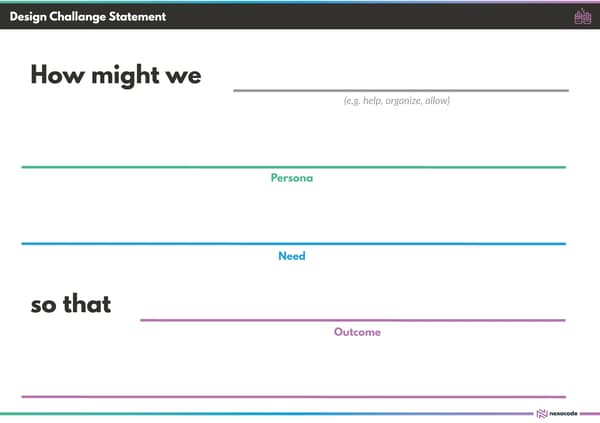
Further Research and Toolkit
The Problem Framing workshops showed how little we all know and how different are the views, opinions, and ideas. Most of all, we lacked input from critical stakeholders (though, not decision-makers) - in that particular case, elderly citizens, people with disabilities, NGO employees, and the caregivers working at the forefront. It is somewhat surprising that one of the biggest challenges at the beginning of any IT project we work on is to get our clients to agree to give us access to their users. Often, they’ll want us to work through some middlemen, as opposed to having direct access to the customers. As an experienced team, we always try to find creative ways around the problem of lost input from end-users and limited access to get to know them better. That is why, before organizing the next workshops, we proposed conducting additional research. The design methods picked here were mainly ethnographic-inspired user research and tools for gathering insights from different stakeholders. We put great emphasis on cocreational techniques that will help us break down the organizational and procedural silos, contesting established hierarchies or bureaucratic categories. This arrangement gives way to engaging internal and external knowledge and resources and developing a positive transformative environment for project production.
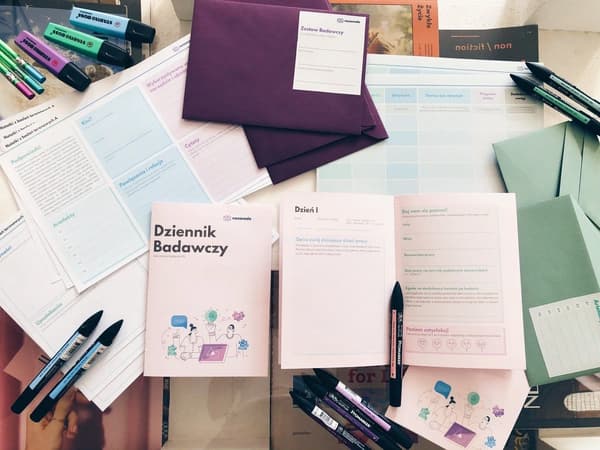
1. Ethnographic Research - Contextual Inquiry
Bringing researchers into direct contact with people, places, situations, and things they are studying is the key to get rich observations about users’ activities and behavior in context. The field visit is the most direct means of building empathy with people, so crucial in the design thinking process. Spending time with people engaged in real-world activities helps innovation researchers understand relevant behaviors firsthand. In our project, we decided to follow peers observing peers method where the researcher role was taken over by people from various departments observing key employees working on the line of public caregiving service. Our researchers’ task was to ask participants to talk about specific activities, things they use, the software they engage with when at work. Throughout a contextual inquiry visit, it is vital to capture all observations by taking notes, photos, collecting artifacts (e.g., screenshots of software used and how) immediately, and, as much as possible, keeping the data organized for later analysis. That is why, together with instructions on how to conduct a field visit session, we distributed dedicated templates for notes and artifacts gathering. Why did we pick this method? It lets you focus on details and experience by providing evidence. Contextual inquiry promotes learning in context and, when conducted by peers, is the best way to build empathy and highlight things we miss in daily routines and expectations. The method is a way to get acquainted with users in an unbiased fashion and frequently provide glimpses of nonobvious or surprising behaviors and insights about unmet needs and unnecessary processes.
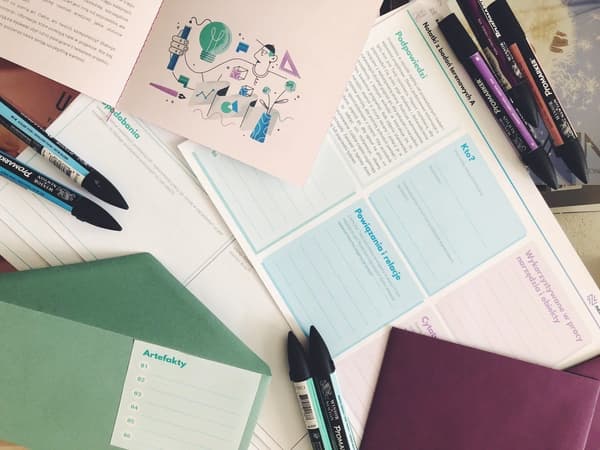
2. Cultural Probe - Diary Studies for the target users
One of the primary user groups of the planned platform would be caregivers. We wanted to take a more in-depth look at caregivers’ work, but it wouldn’t be easy to shadow workers taking care of those in need (caretakers’ privacy, the sole fact of having a third person around, etc.). Gathering information with single interviews would also cost us losing valuable insights that could not be easily shared. To get these insights, we proposed to conduct a cultural probe in the form of diary studies. Why this method? Diary studies are guiding artifacts used to sample self-reported participant interactions, behavior, and feelings over a more extended period. These blank journals issued to participants allow them to express personal details about their daily work habits conveniently and expressively. They are used to inspire ideas for future public goods and serve as a means of gathering inspirational data about people’s work, values, and thoughts. Information collected from cultural probes is particularly useful when you need to gather information from users with minimal influence on their actions, or when the process or event you’re exploring takes place intermittently or over a long period. For this particular workshop, we brainstormed, designed, and prototyped new cultural probes that are easy to follow and fill in for our participants - mostly people over 50 years old with primary education. This is why, in a digital era, we still chose pen and paper methods. The paper-based diary, apart from thorough instructions, had descriptions that showed the problem landscape and were an invitation for participants to co-design and impact the solutions and policies developed for the city of Wrocław. We chose the language to be engaging and inspire our interviewees to want to really show us their situation.
We asked municipality operators to select participants, distribute material kits, and brief them about the requirement to record and note specific events, feelings, or interactions over four weeks. We wanted journaling to be an introspective experience for caregivers that would simultaneously allow them to know more about their work habits and obstacles they face in daily work. Even with the best instructions in the world, it’s important to give feedback to journal study participants to reassure them that they’re doing the right thing or giving them additional guidance if they’re struggling. That is why we also planned follow-up phone interviews to be conducted in the middle of the project. This helps ensure that participants are actively engaged and are collecting the needed information. At the end of the project, the materials were to be collected by operators and send back to our research team for analysis.
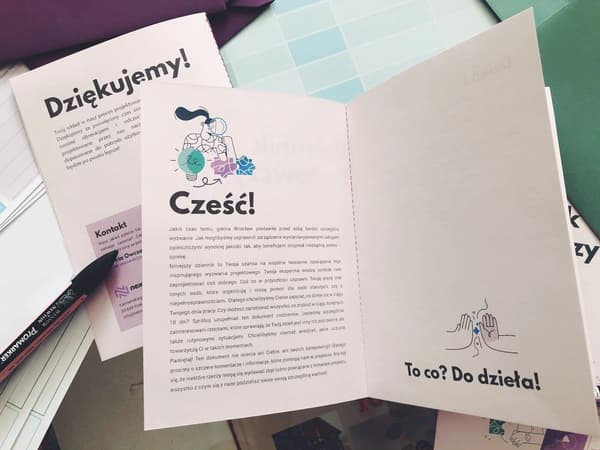
3. Key Facts - Gathering information across multiple organizations
During the first workshops, we noticed that knowledge is spread between different institutions and people working on different levels. There was also no easy way to gather that insight during a 1-day meeting. Key Facts is a design exercise that aids gathering key information to get deep project insight and anchor the rationale for an intent statement. We designed a unique template where our chosen participants could list concise pieces of data that indicated the state of public caregiving. Key Facts can be statistical in nature, or expert opinions summarized in brief statements, organized in our template doc for more accessible analysis. Aggregating many different bits of information as Key Facts helps teams create an excellent fact-based rationale for their initial innovation intent. They are also starting points, indicating where to go to find additional information. How did we conduct this exercise? We decided to identify domain experts across public institutions and NGOs that could collect and compile statistical data relevant to our project. We distributed printed templates among these people and asked them to fill in their individual insights that, when gathered back together, would be built into a shared understanding of the topic and a credible foundation for our project efforts.
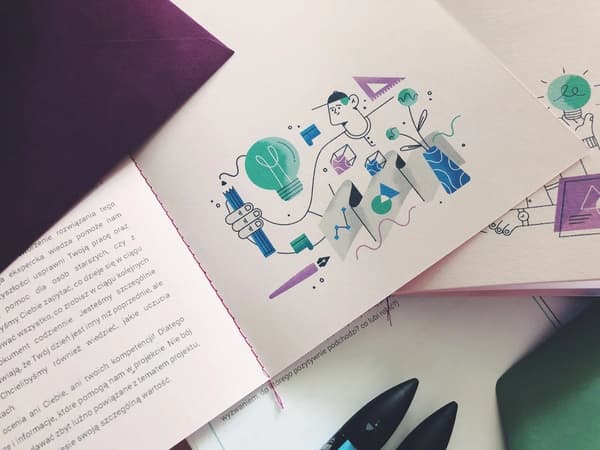
Understanding that the caregiving problem space is widespread between different stakeholders, we decided to put great emphasis on internal communication among various functions and divisions in all of the exercises described above. We based the further research part on external interaction among diverse actors and institutions with different levels of research team governance. In this toolkit, we combined advanced new service development processes with a learning framework, to draw insights and provide guidance, and to set up a knowledge-creation space for a range of diverse stakeholders to experiment and find tailored ways of integrating the new approaches and practices for improving elderly and disabled care.
The research part takes some time, and we are waiting to get the materials back and move forward with research outcomes analysis. Fingers crossed it all goes well! We are excited because it should prove to be great information on the premise and scope of the project and put all stakeholders on the same page with full project transparency.
Design at the heart of the public sector
A desire to change exists in many government organizations, and many realize the old way of ordering IT services and plain doing things is not sustainable. Public institutions need a more intimate understanding of their citizens and different end-users. They need to deliver services faster, collaborate widely, seek continuous feedback, and iterate. Digital technology provides many answers to these challenges, but it is the design centered innovation that must be at the heart of this shift. It is the design that offers the capacity to engage with user needs and social needs and to take a prototyping approach to solutions. Nurturing the right design skills and culture to support this change will be critical to long term success in delivering public service for the future.
Through the city as a platform approach, Wrocław city wants to support seamless interactions between government agencies and local partners such as NGOs and civic organizations and various businesses. A considerable challenge, long way, and a big opportunity lie ahead of the city of Wrocław and all the stakeholders involved. Still, with this kind of kickstart, one can only expect something extraordinary.



